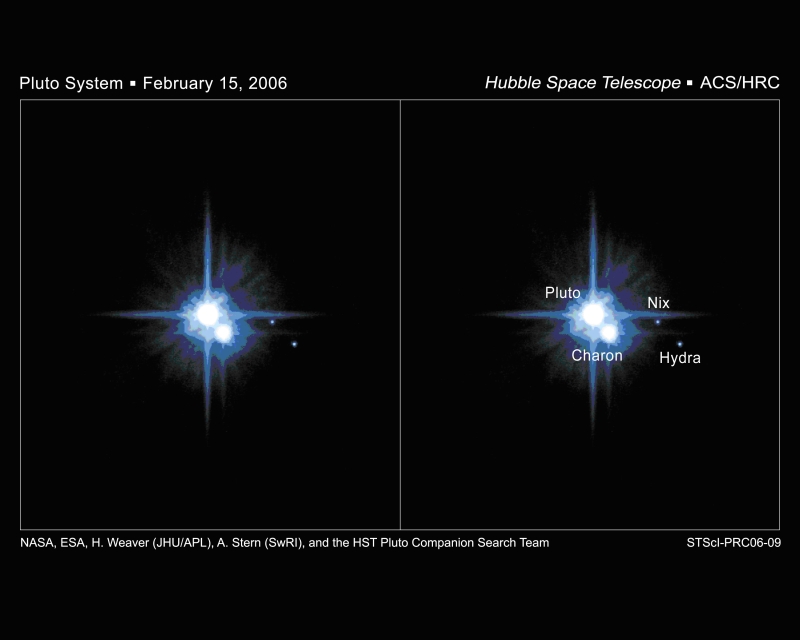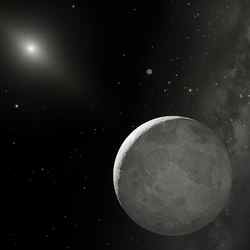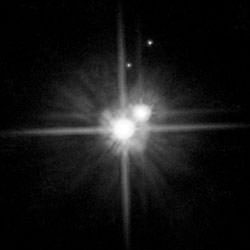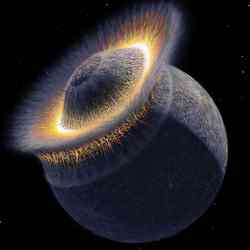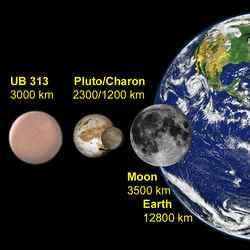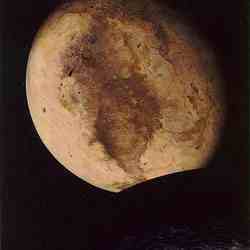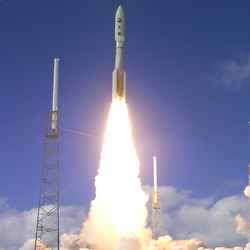
Liftoff of the Atlas V carrying NASA’s New Horizons spacecraft. Image credit: NASA/KSC Click to enlarge
The first mission to distant planet Pluto is under way after the successful launch today of NASA’s New Horizons spacecraft from Cape Canaveral Air Force Station, Fla.
New Horizons roared into the afternoon sky aboard a powerful Atlas V rocket at 2 p.m. EST. It separated from its solid-fuel kick motor 44 minutes, 53 seconds after launch, and mission controllers at the Johns Hopkins University Applied Physics Laboratory (APL) in Laurel, Md., where the spacecraft was designed and built, received the first radio signals from New Horizons a little more than five minutes later. The radio communications, sent through NASA’s Deep Space Network antennas in Canberra, Australia, confirmed to controllers that the spacecraft was healthy and ready to begin initial operations.
“Today, NASA began an unprecedented journey of exploration to the ninth planet in the solar system,” says Dr. Colleen Hartman, deputy associate administrator for NASA’s Science Mission Directorate, Washington, D.C. “Right now, what we know about Pluto could be written on the back of a postage stamp. After this mission, we’ll be able to fill textbooks with new information.”
The 1,054-pound, piano-sized spacecraft is the fastest ever launched, speeding away from Earth at approximately 36,000 miles per hour, on a trajectory that will take it more than 3 billion miles toward its primary science target. New Horizons will zip past Jupiter for a gravity assist and science studies in February 2007, and conduct the first close-up, in-depth study of Pluto and its moons in summer 2015. As part of a potential extended mission, the spacecraft would then examine one or more additional objects in the Kuiper Belt, the region of ancient, icy, rocky bodies (including Pluto) far beyond Neptune?s orbit.
“The United States of America has just made history by launching the first spacecraft to explore Pluto and the Kuiper Belt beyond,” says Dr. Alan Stern, New Horizons principal investigator, from Southwest Research Institute in Boulder, Colo. No other nation has this capability. This is the kind of exploration that forefathers like Lewis and Clark, 200 years ago this year, made a trademark of our nation.”
Over the next several weeks, mission operators at APL will place the spacecraft in flight mode, check out its critical operating systems and perform small propulsive maneuvers to refine its path toward Jupiter. Following that, among other operations, the team will begin checking and commissioning most of the seven science instruments.
“This is the gateway to a long, exciting journey,” says Glen Fountain, New Horizons project manager from APL. “The team has worked hard for the past four years to get the spacecraft ready for the voyage to Pluto and beyond, to places we’ve never seen up close. This is a once-in-a-lifetime opportunity, in the tradition of the Mariner, Pioneer, and Voyager missions to set out for first looks in our solar system.”
After the Jupiter encounter ? during which New Horizons will train its science instruments on the large planet and its moons ?? the spacecraft will “sleep” in electronic hibernation for much of the cruise to Pluto. Operators will turn off all but the most critical electronic systems and check in with the spacecraft once a year to check out the critical systems, calibrate the instruments and perform course corrections, if necessary.
Between the in-depth checkouts, New Horizons will send back a beacon signal each week to give operators an instant read on spacecraft health. The entire spacecraft, drawing electricity from a single radioisotope thermoelectric generator, operates on less power than a pair of 100-watt household light bulbs.
New Horizons is the first mission in NASA’s New Frontiers Program of medium-class spacecraft exploration projects. Stern leads the mission and science team as principal investigator. APL manages the mission for NASA’s Science Mission Directorate and is operating the spacecraft in flight. The mission team also includes Ball Aerospace Corporation, the Boeing Company, NASA Goddard Space Flight Center, NASA Jet Propulsion Laboratory, Stanford University, KinetX, Inc., Lockheed Martin Corporation, University of Colorado, the U.S. Department of Energy, and a number of other firms, NASA centers, and university partners.
Original Source: APL News Release
